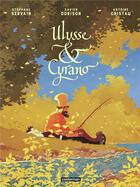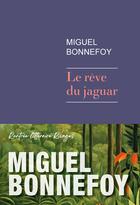-
Date de parution : 29/08/2020
-
Editeur :
Pu De Louvain
-
EAN : 9782875589965
-
Série :
(-)
-
Support :
Papier
Résumé:
This collection of papers explores whether the Lévi-Straussian notion of the House is a valid concept in aiding the comprehension of the social structure of Bronze Age Aegean societies. The main question that is addressed is whether there was a specific social institution or definable group... Voir plus
This collection of papers explores whether the Lévi-Straussian notion of the House is a valid concept in aiding the comprehension of the social structure of Bronze Age Aegean societies. The main question that is addressed is whether there was a specific social institution or definable group that, through its materialisation, differentiated itself from other social units, such as nuclear families. While little agreement was reached, the volume succeeds in stressing the advances made in the study of social structure of the Aegean on the basis of material remains. Moreover, the discussions presented demonstrate that the House as an analytical unit allows a better understanding of what on Crete has usually been called 'the elite' - an anonymous group of people with shared values and practices. It is the contention of the editors that such an interpretation of the basal social structure may help understand the unique emergence, development and character of Minoan society, as well as its distinctive material culture.Apart from a general introduction by Jan Driessen and Maria Relaki, the first part of the volume deals with Minoan Crete starting with Quentin Letesson & Jan Driessen presenting a diachronic overview of the House in Minoan society, and followed by papers that present case-studies of the Prepalatial (Simona Todaro; Yiannis Papadatos) and Neopalatial period (Dario Puglisi; Carl Knappett ; Emmanouela Apostolaki; Pietro Militello, Orazio Palio & Marianna Figuera ; Chrysa Sofi anou & Thomas Brogan ; Eleni Gerontakou, Maria Kyritsi & Alexandra Salichou). In addition, specialised studies deal with ritual practice (Christine Morris & Alan Peatfi eld), signet rings and seals (Sarah Finlayson; Anna Simandiraki-Grimshaw) and the political transformations after the destruction of the New Palaces (Eleni Hatzaki). The last part of the volume comprises two papers (Artemis Karnava & Irene Nikolakopoulou ; Evi Gorogianni) that address social structure on the islands of Santorini and Kea while papers by Stratos Nanoglou, Kalliopi Efkleidou and Maria Luisa Ruiz-Galvez present possibilities of application of the concept on Mainland Greece and elsewhere. In the last part of the volume, Maria Relaki presents a theoretical re-evaluation of the role of kinship in House Society studies.
Donner votre avis














